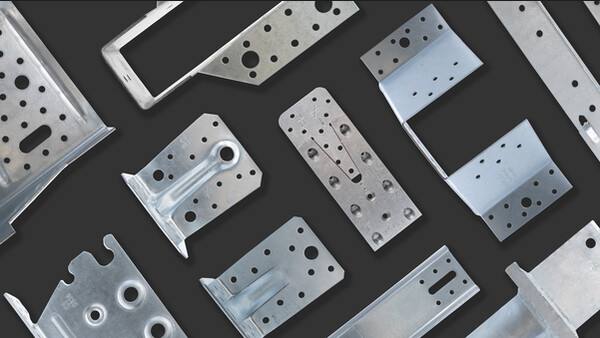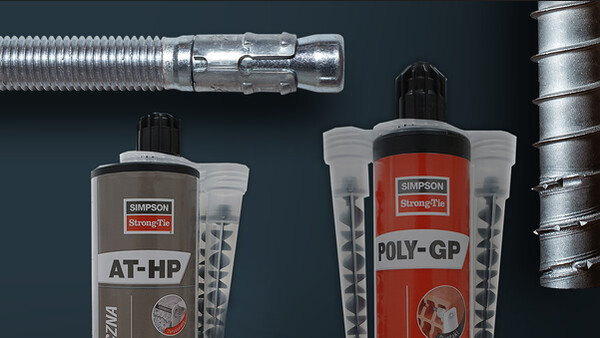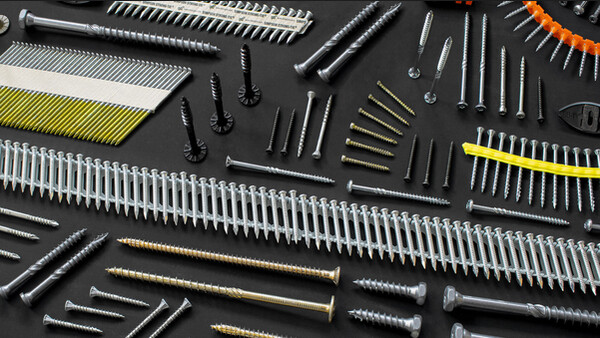Kotwa mechaniczna
Kotwy BOAX-II charakteryzuje się szybkością montażu i wysoką nośnością przy niewielkich odległościach pomiędzy kotwami i niewielkich odległościach krawędziowych.
Szczegóły produktu
Właściwości
Materiał
- Stal cynkowana elektrolitycznie zgodnie z EN ISO 4042; pasywowana
Zalety
- Szybkiego montażu w zarysowanym i niezarysowanym betonie (opcj1).
- Zoptymalizowany klips rozporowy gwarantuje równomierny rozkład naprężeń umożliwiający stosowanie przy dużych obciążeniach dopuszczalnych
- Małe odstępy osiowe do krawędzi w przypadku niewielkich elementów budowlanych.
- Zwiększona wytrzymałość na rozciąganie i ścinanie.
Zastosowanie
Obszar zastosowań
Stosowane są głównie do mocowania w podłożach gładkich i twardych tj. beton, żelbet itp. Kotwa przeznaczona jest do mocowania w zakresie średnich obciążeń elementów konstrukcji budowlanych:
- Elewacji
- Barier
- Poręczy
- Konstrukcji metalowych
- Profili metalowych
- Podstaw do maszyn
- Konsoli, konstrukcji drewnianych
- Belek
- Płatwi
- Wieszaków itp.
Dane techniczne
Obciążenia rekomndowane - beton zarysowany
* Nie objęte aprobatą
Obciążenia rekomndowane/ dla pojedynczej kotwy/ beton niezarysowany
* Nie zawarte w ETA-08/0276
1) Zalecane obciążenia zostały obliczone na podstawie nośności charakterystycznych podanych w ETA z częściowymi współczynnikami bezpieczeństwa podanymi w ETAG001 i częściowym współczynniku bezpieczeństwa dla obciążeń: f = 1,4.
2) Zalecane obciążenia osiowe obowiązują dla betonu zbrojonego i żelbetu z odstępem między prętami s ≥ 15 cm (dowolna średnica) lub z odstępem zbrojenia s ≥ 10 cm, jeśli średnica pręta zbrojeniowego wynosi 10 mm lub mniej.
3) Dane dotyczące ścinania dotyczą pojedynczej kotwy bez wpływu krawędzi betonu. Dla zakotwień bliskich krawędzi (c ≤ max [10 hef; 60d]) należy sprawdzić uszkodzenie krawędzi betonu zgodnie z ETAG 001, załącznik C, metoda projektowania A.
4) Beton jest uważany za niezarysowany, gdy naprężenie rozciągające w betonie wynosi \ sigmaL + \ sigmaR ≤ 0. W przypadku braku szczegółowej danych można przyjąć, że \ sigmaR = 3 N / mm² (\ sigmaL jest równe wytrzymałości na rozciąganie
naprężenia w betonie wywołane przez obciążenia zewnętrzne, w tym obciążenia od kotew).
6) Zalecany moment gnący obowiązuje tylko dla prętów gwintowanych.
7) BOA-X M16 / 95 nie jest zawarty w ETA-08/0276. Zalecane obciązenia w betonie zarysowanym (C20 / 25 à C50 / 60) to:
Rds, N = 6,4 [kN]; Rds, V = 6,4 [kN]
A w betonie niezarysowanym:
Rds, N = 10,0 [kN]; Rds, V = 10,0 [kN]
Design capacities - single anchor - no edge distances - Non-cracked concrete
1. The design loads loads have been calculated using the partial safety factors for resistances stated in ETA-approval(s). The loading figures are valid for unreinforced concrete and reinforced concrete with a rebar spacing s ≥ 15 cm (any diameter) or with a rebar spacing s ≥ 10 cm, if the rebar diameter is 10mm or smaller.
2. The figures for shear are based on a single anchor without influence of concrete edges. For anchorages close to edges (c ≤ max [10 hef; 60d]) the concrete edge failure shall be checked per ETAG 001, Annex C, design method A.
3. Concrete is considered non-cracked when the tensile stress within the concrete is\sigmaL +\sigmaR ≤ 0. In the absence of detailed verification\sigmaR = 3 N/mm² can be assumed (\sigmaL equals the tensile stress within the concrete induced by external loads, anchors loads included).
*Not covered by ETA-08/0276
Design capacities - single anchor - no edge distances - Cracked concrete
1. The design loads loads have been calculated using the partial safety factors for resistances stated in ETA-approval(s). The loading figures are valid for unreinforced concrete and reinforced concrete with a rebar spacing s ≥ 15 cm (any diameter) or with a rebar spacing s ≥ 10 cm, if the rebar diameter is 10mm or smaller.
2. The figures for shear are based on a single anchor without influence of concrete edges. For anchorages close to edges (c ≤ max [10 hef; 60d]) the concrete edge failure shall be checked per ETAG 001, Annex C, design method A.
3. Concrete is considered non-cracked when the tensile stress within the concrete is\sigmaL +\sigmaR ≤ 0. In the absence of detailed verification\sigmaR = 3 N/mm² can be assumed (\sigmaL equals the tensile stress within the concrete induced by external loads, anchors loads included).
*Not covered by ETA-08/0276
Recommended capacities - single anchor - no edge distances - Non-cracked concrete
1. The recommended loads have been calculated using the partial safety factors for resistances stated in ETA-approval(s) and with a partial safety factor for actions of γF=1.4. The loading figures
are valid for unreinforced concrete and reinforced concrete with a rebar spacing s ≥ 15 cm (any diameter) or with a rebar spacing s ≥ 10 cm, if the rebar diameter is 10 mm or smaller.
2. The figures for shear are based on a single anchor without influence of concrete edges. For anchorages close to edges (c ≤ max [10 hef; 60d]) the concrete edge failure shall be checked per
ETAG 001, Annex C, design method A.
3. Concrete is considered non-cracked when the tensile stress within the concrete is\sigmaL +\sigmaR ≤ 0. In the absence of detailed verification\sigmaR = 3 N/mm² can be assumed (\sigmaL equals the tensile stress within the concrete induced by external loads, anchors loads included).
Recommended capacities - single anchor - no edge distances - Cracked concrete
1. The recommended loads have been calculated using the partial safety factors for resistances stated in ETA-approval(s) and with a partial safety factor for actions of γF=1.4. The loading figures
are valid for unreinforced concrete and reinforced concrete with a rebar spacing s ≥ 15 cm (any diameter) or with a rebar spacing s ≥ 10 cm, if the rebar diameter is 10 mm or smaller.
2. The figures for shear are based on a single anchor without influence of concrete edges. For anchorages close to edges (c ≤ max [10 hef; 60d]) the concrete edge failure shall be checked per
ETAG 001, Annex C, design method A.
3. Concrete is considered non-cracked when the tensile stress within the concrete is\sigmaL +\sigmaR ≤ 0. In the absence of detailed verification\sigmaR = 3 N/mm² can be assumed (\sigmaL equals the tensile stress within the concrete induced by external loads, anchors loads included).
Instalacja
Montaż
Montaż
- Wywiercić otwór o odpowiedniej średnicy i głębokości.
- Usunąć zwierciny z otworu za pomocą ręcznej pompki.
- Włożyć kotwę do otworu lub przelotowo przez mocowany element i dobić ją młotkiem na odpowiednią głębokość.
- Używając klucza dynamometrycznego dokręcić kotwę do wymaganego momentu. Patrz instrukcja dołączona do produktu lub tabela parametry montażowe
Dane montażowe
* Nie objete aprobatą










